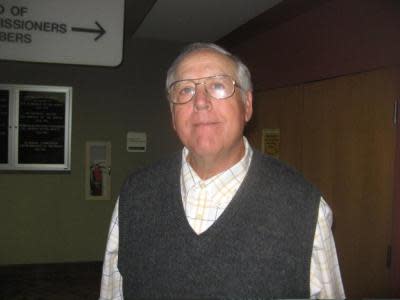Monroe County agriculture: Use 'rule of thirds' when cutting grass
Weather for farmers in the early part of the growing season, in April, is mostly about the all-important soil temperatures needed for timely seed germination. The minimum soil temperature, at the two-inch level, under bare soil, at the MSU Enviroweather station at Deerfield/ Blissfield, has been steadily in the low 40s for the past two weeks. This and the rain and cool weather of the past couple of weeks has kept tractors and planters in the machine shed. Now the eight- to-14-day outlook by the National Weather Service Climate Predication Center, for April 10-16, and updated April 2, is calling for a good chance of above normal air temperatures, and “leaning” to above normal chances of precipitation.

Farmer sentiment improved in March, according to the Purdue/Chicago Mercantile Exchange (CME) Group monthly survey of select farmers, mainly due to an expectation of lower interest rates later this year. This future sentiment was offset by a lower index of the current situation, as farmers reported that their financial condition has deteriorated over the past year.
Corn or soybean planting will begin as soon as weather and soil conditions allow. Most important is to get the crop planted and not worry about things such as micronutrient fertilization now. Although there are 17 elements essential for plant growth, eight are micronutrients, meaning plants uptake smaller amounts of these, than the macronutrients. The “big three” are nitrogen, phosphorus and potassium, along with oxygen, hydrogen and carbon. There are three secondary nutrients, including: sulfur, magnesium and calcium leaving the eight micronutrients of: boron, chlorine, copper, iron, manganese, molybdenum, zinc and nickel. The 2024-08 issue of the Ohio State C.O.R.N. newsletter referred to the Tri-State Fertilizer Recommendations and a micronutrient fertilizer trial in Ohio from 1976 to 2017. There were 33 corn trials and 144 soybean trials conducted in 17 Ohio counties, including Fulton and Wood counties of northwest Ohio. In general, micronutrient fertilization rarely resulted in a statistically significant yield response. However, the probability of a yield response to micronutrients is much greater where deficiencies are known, or suspected, such as in sandy, acidic or peat soils. Farmers are encouraged to scout crops and use plant tissue tests as diagnostic tools that can accurately predict when to apply micronutrient fertilizer.
Shipping of commodities in and out of the Great Lakes, and Lake Erie is relatively minor compared to the huge shipping ports on the east and west coasts, such as Baltimore. Still, boats at the Port of Toledo or Monroe can only load commodities, such as soybeans, to about 26 feet and still get through the “out-of-date” Welland Canal. Then they need to go to ports such as in Baltimore to top off of their load of soybeans, before heading to southeast Asia or elsewhere. Although Mexico is the largest importer of U.S. corn, most corn shipped by boat goes to Rotterdam or Europe. Wheat tends to go to Egypt, Algeria or the Middle East and soybeans tend to go to Japan, southeast Asia or China.
Subscribe Now: For all the latest local developments, breaking news and high school sports content.
Lawns and the “rule of thirds” means cutting about one-third the height of the grass. Mowing too short, or even scalping the lawn, means the grass has to recover before it can re-grow, allowing weeds to get a head start and then crowd out the desirable grass species. Mowing too much grass at one time can leave lots of clippings which can smother grass or promote diseases, such as Powdery mildew. Untreated grass clippings can be a source of mulch for the garden or compost pile. Our cool season grasses do very well in the cooler spring and fall times of the growing season, but this can also mean mowing lawns more often.
— Ned Birkey is an MSU Extension educator emeritus and a regular contributor to The Monroe News.
This article originally appeared on The Monroe News: Monroe County agriculture: Use 'rule of thirds' when cutting grass
